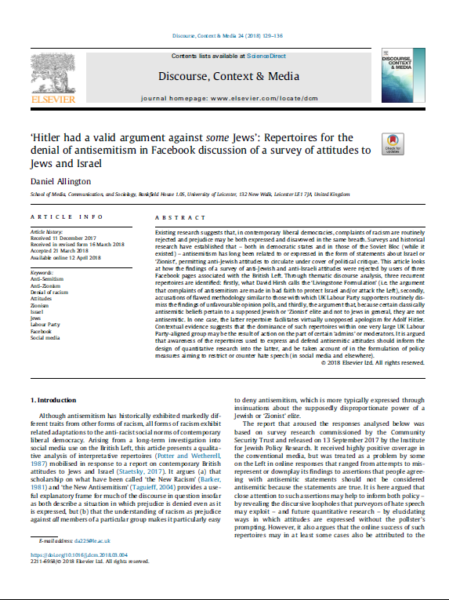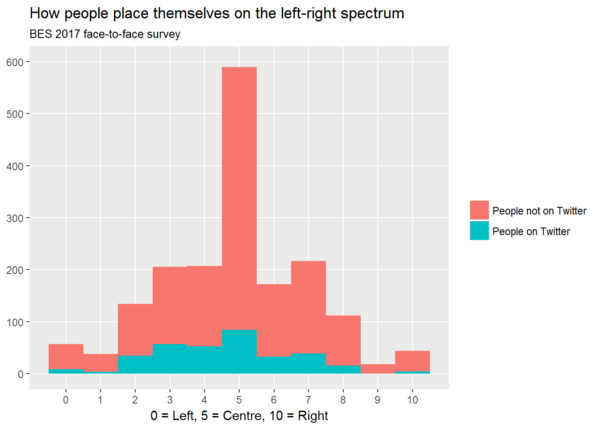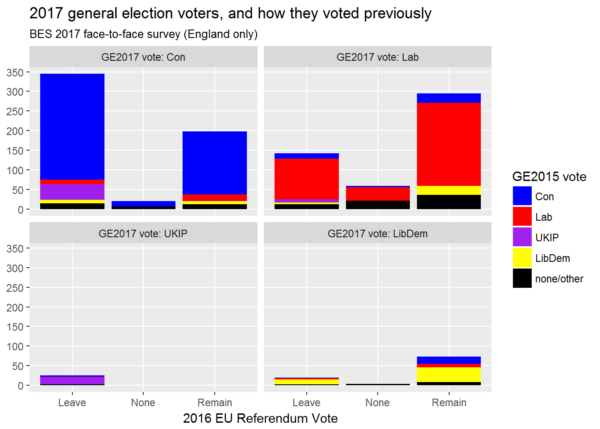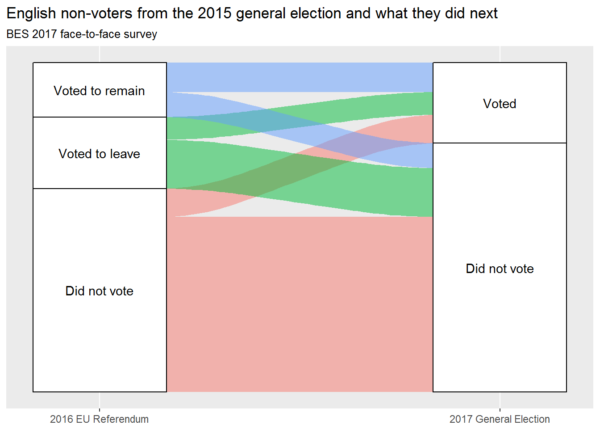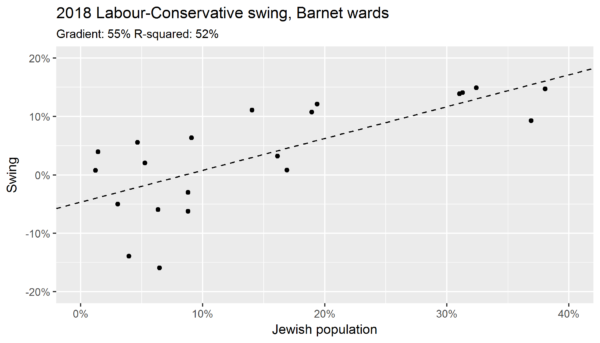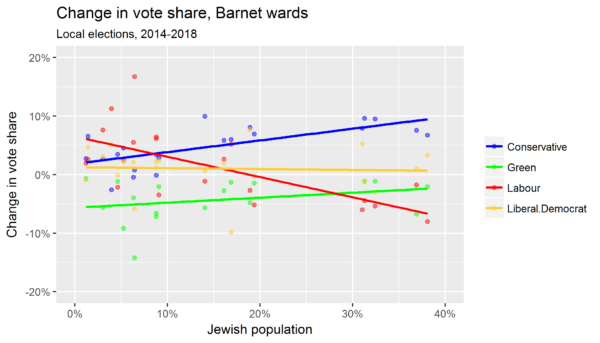This manuscript has been accepted for publication in the peer-reviewed academic journal, Discourse, Context & Media. By agreement with the publisher, it can be distributed on this website. For offline reading, a PDF copy is available for download (although if you wish to share it with others, please direct them to this page rather than sending the file directly). EDIT (13 April 2018): The version of record is now available online via ScienceDirect at https://doi.org/10.1016/j.dcm.2018.03.004 ahead of print publication. EDIT (4 August 2018): The article has appeared in the August issue of Discourse, Context & Media (vol. 24), and is available online at the same address (although now with correct pagination).
Author: Daniel Allington, University of Leicester
Journal: Discourse, Context & Media
Received at editorial office: 11 Dec 2017
Article revised: 16 Mar 2018
Article accepted for publication: 21 Mar 2018
Article available online via ScienceDirect: 12 April 2018
Article available in print: 21 July 2018
Bibliographic reference: Allington, D. (2018) ‘ “Hitler had a valid argument against some Jews”: Repertoires for the denial of antisemitism in Facebook discussion of a survey of attitudes to Jews and Israel’. Discourse, Context, and Media 24: 129-136.
Abstract
Discourse analytic research suggests that, in contemporary liberal democracies, complaints of racism are routinely rejected and prejudice may be both expressed and disavowed in the same breath. Historical and quantitative research has established that – both in democratic states and in those of the Soviet Bloc (while it existed) – antisemitism has long been related to or expressed in the form of statements about Israel or Zionism, permitting anti-Jewish attitudes to circulate under cover of political critique. This article looks at how the findings of a survey of anti-Jewish and anti-Israeli attitudes were rejected by users of three Facebook pages associated with the British Left. Through thematic discourse analysis, three recurrent repertoires are identified: firstly, what David Hirsh calls the ‘Livingstone Formulation’ (i.e. the argument that complaints of antisemitism are made in bad faith to protect Israel and/or attack the Left), secondly, accusations of flawed methodology similar to those with which UK Labour Party supporters routinely dismiss the findings of unfavourable opinion polls, and thirdly, the argument that, because certain classically antisemitic beliefs pertain to a supposed Jewish or ‘Zionist’ elite and not to Jews in general, they are not antisemitic. In one case, the latter repertoire facilitates virtually unopposed apologism for Adolf Hitler. Contextual evidence suggests that the dominance of such repertoires within one very large UK Labour Party-aligned group may be the result of action on the part of certain ‘admins’ or moderators. It is argued that awareness of the repertoires used to express and defend antisemitic attitudes should inform the design of quantitative research into the latter, and be taken account of in the formulation of policy measures aiming to restrict or counter hate speech (in social media and elsewhere).
Keywords: anti-Semitism; anti-Zionism; denial of racism; attitudes; Zionism; Israel; Jews; Labour Party; Facebook; social media
Continue reading “‘Hitler had a valid argument against some Jews’: repertoires for the denial of antisemitism in Facebook discussion of a survey of attitudes to Jews and Israel (manuscript draft)”

